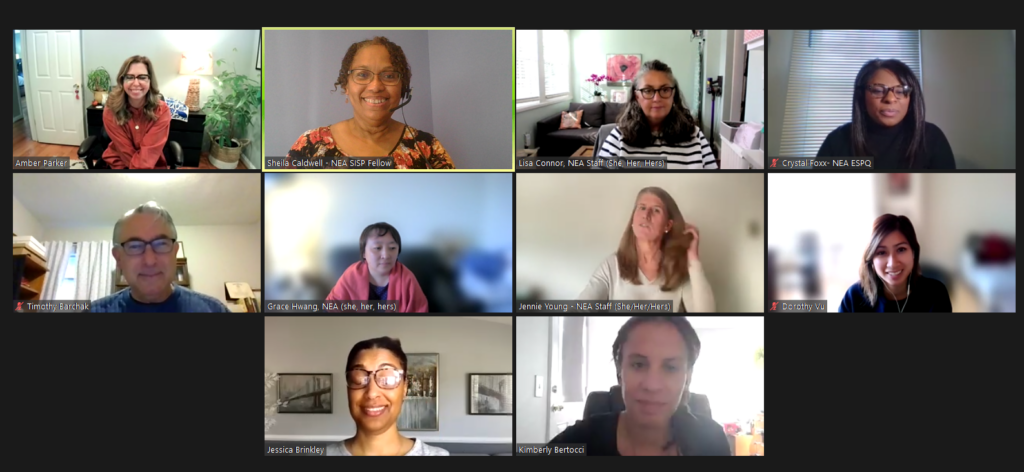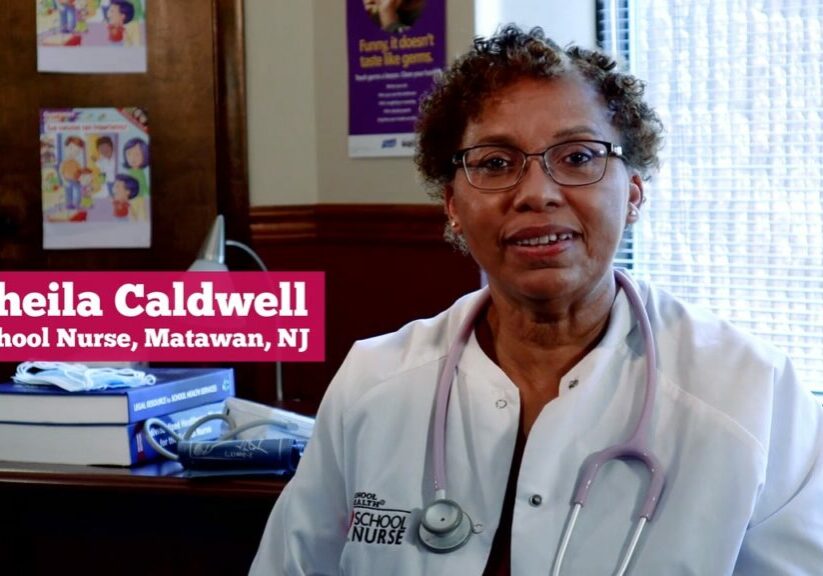By Sheila Caldwell, BSN, RN, CSN-NJ
As I approached the dance hall, I could hear music, but it didn’t sound like it was coming from the DJ. When I opened the door of the boundless dance hall, I could see an orchestra in one area, a DJ in another, a band in another, a wooden platform in another and flattened cardboard strewn in the center where there stood two young individuals, who invited me to join them for my first dance, boombox in hand. I knew right then and there that I needed to put on my athletic dance shoes because I was going to need to draw on my repertoire of moves that included Toprocks, Footwork, Floor Rocks and surely Drops. I was in it! Jumping in “feet first” as they say, ready to perform to the various beats played. Knowing that at any given moment I might be called to dance in one of the different areas of the dance hall.
My first week kicked off with a requirement to provide a verbal account about the importance of specialized instructional support personnel (SISPs) with the main focus on school health and its impact in true community school settings. I’ve worked in a community school and grasped a full understanding of its mission and vision. Even so, I can’t help but think about those of you who do work in community schools and wonder if the entire concept still holds true today. When I speak with teachers and SISPs, there doesn’t seem to be that same feel—the feel that was so potent when I was working in a community school. Whether the school is located in an urban, urb-suburban, suburban or rural area of our state, the overall concept should be the same. NEA has a wonderful website to learn more about community schools.
While working on my testimony about community schools, I was introduced to a few of the other staff members of the Education Support Professionals Quality (ESPQ) Center. You will hear me speak of ‘centers’ throughout my writings; please know this is the terminology of the NEA, meaning ‘departments.’

I met with the lead person overseeing the NEA Safety and Health Committee and I jumped right into an existing project to work with a local education association in the Midwest to tailor their Health and Safety Team. This will be one of my ongoing projects throughout my fellowship. By the way, did you know that, here in our state, NJEA has a Health and Safety Team that encourages local education associations to start their own health and safety committees if they don’t already have them. I would encourage you to invite your school nurse to a meeting. Our input is vital. For more information, visit njea.org/issues/health-safety. Ask your local association president for more information as well. Don’t forget the NJEA Health and Safety Conference, Nov. 12-13.
I am slated to meet the ESPQ Center individuals, and it is becoming very apparent that I really never thought about the vast amount of initiatives and other NEA centers and their interconnectedness on issues and initiatives. I was quickly seeing, from the inside, all that it takes for NEA to afford us the benefits of membership, advocacy, and opportunity. Don’t get me wrong, I knew that it had to be a lot, but as I am sitting in meetings with the vast array of individuals, it is all making sense to me that we don’t take advantage of all that even this one center, ESPQ has to offer. If you read in the October edition of NJEA Review, you would have seen some of the opportunities awarded to NJEA members. Be sure you check out pages 18-19, or click here and here.
NEA ESPQ has a wide range of opportunities for professional growth, from ESP Peer Mentorship to even ESP Leadership Institute. There is even a NEA ESP National Conference! It is currently planned to be in New Orleans, March 25-27, 2022 as long as conditions permit. Who knew? I surely didn’t. To learn more about the Professional Learning Programs, visit here.
I’ve learned so much about the inner working at NEA; each place of work has is own unique culture, and sometimes, its own language. There are many more individuals in the ESPQ Center that I am yet to meet, but I must tell you that passion and camaraderie are prevalent, even in the virtual setting. There are daily interactions and necessary collaborations, based on the needs of initiatives that are at hand.
The nature of breakdancing warrants that one must be agile, flexible, able to spin, stop on a dime and jump right up, ready for the next move. This commentary provides you with some insight of what my first month of the SISP Fellowship was like. I’m going to take off my dance shoes for the moment, but still have them close by as I anticipate what’s in store, ebbing and flowing, following the cues of the next song.
Until next month…
Sheila Caldwell is a certified school nurse in the Matawan Aberdeen Regional School District. She is on leave to participate in the SISP Fellowship described in this article. In addition to receiving numerous national and local awards, Caldwell has received the American Academy of Pediatrics-NJ Chapter School Health Advocate of Year (2016) and the 2021 National Association of School Nurses (NASN) Recognition Award for “continued support and unique contributions to NASN and school nursing.” Caldwell can be reached at SCaldwell@nea.org.
